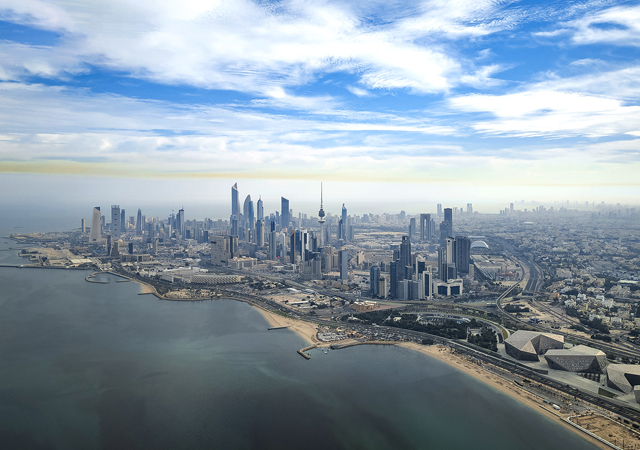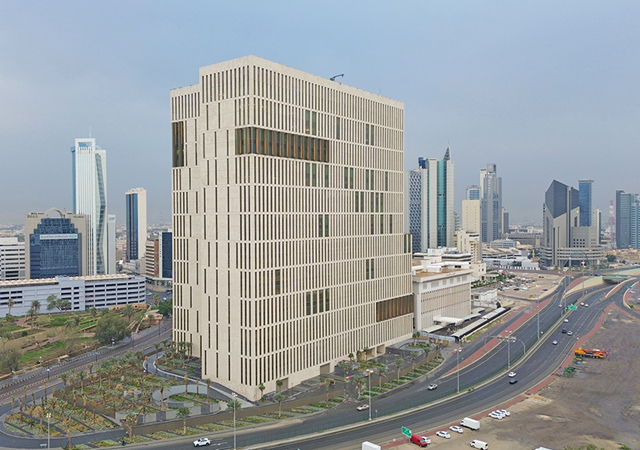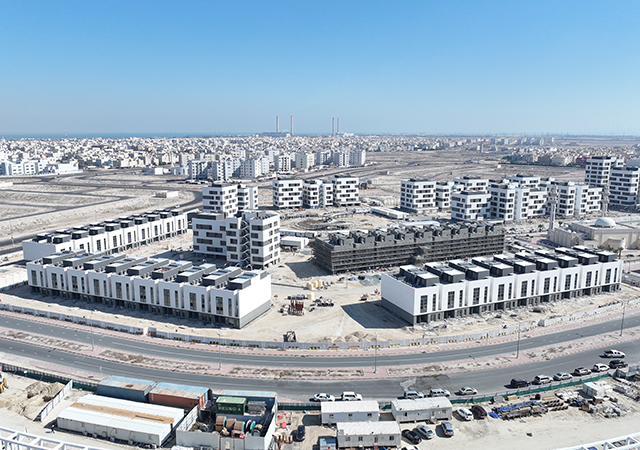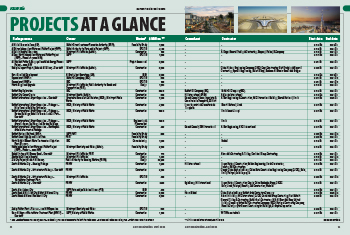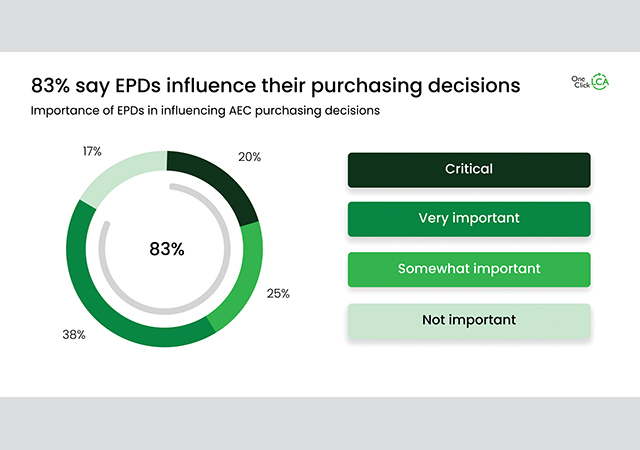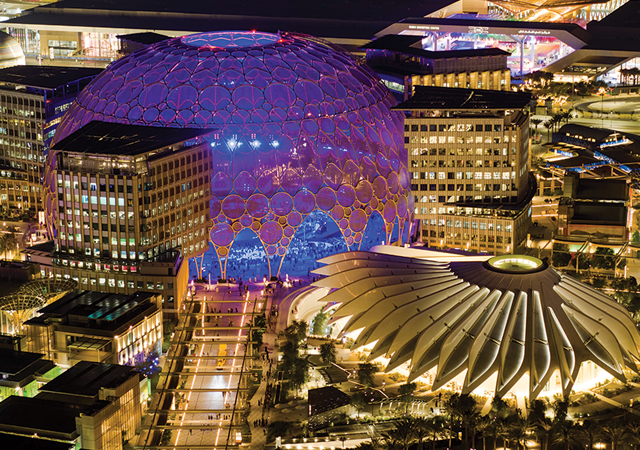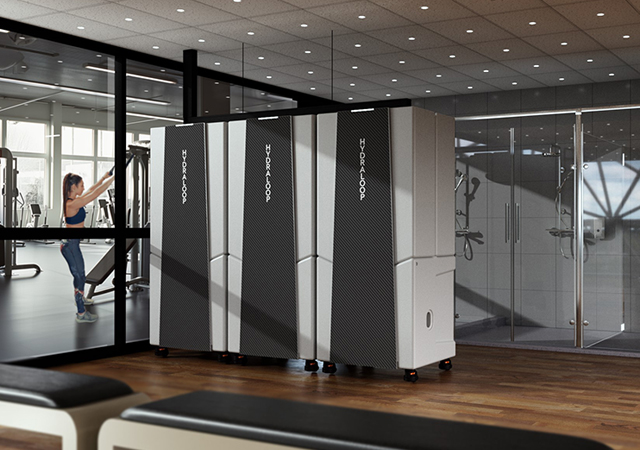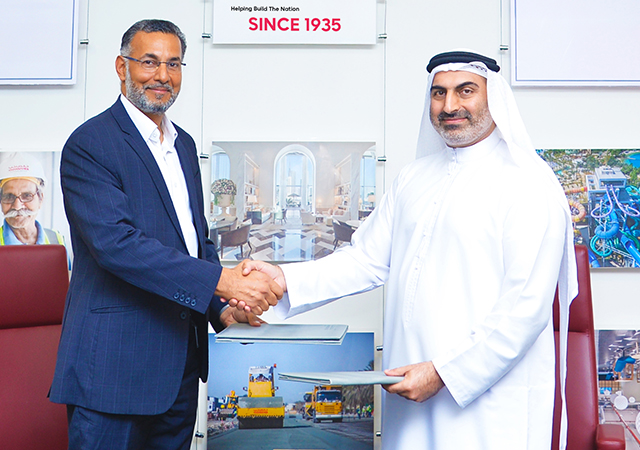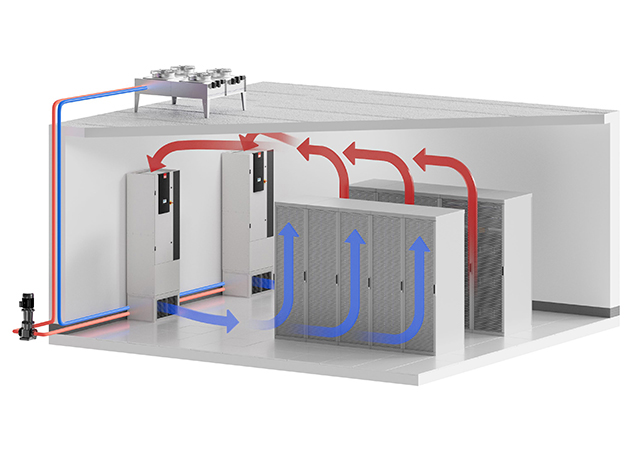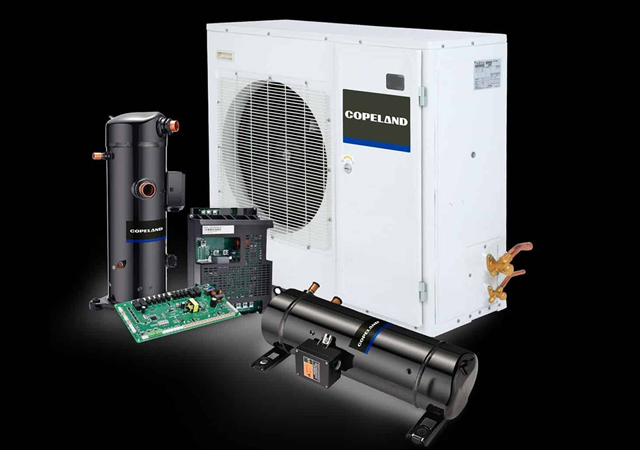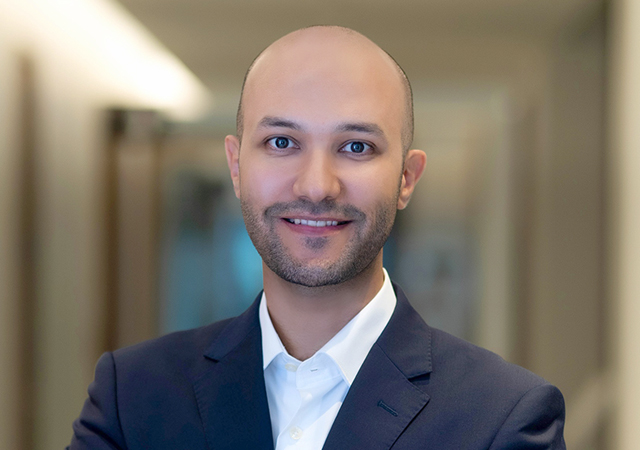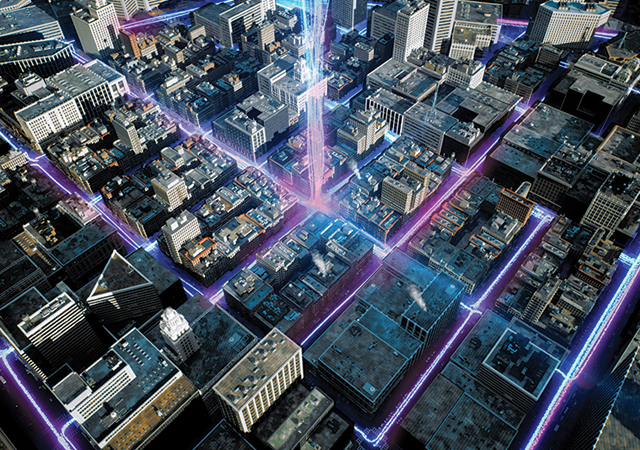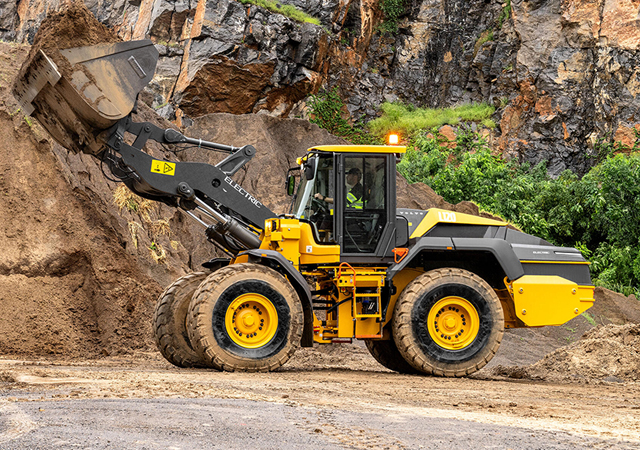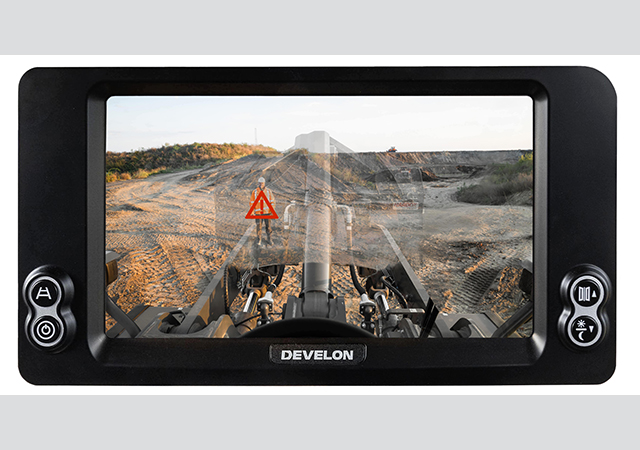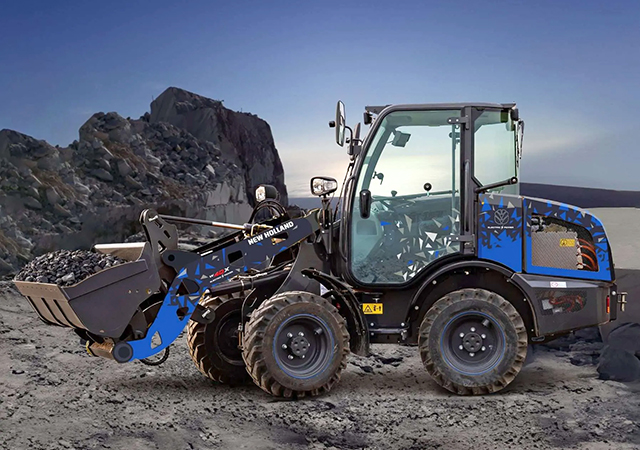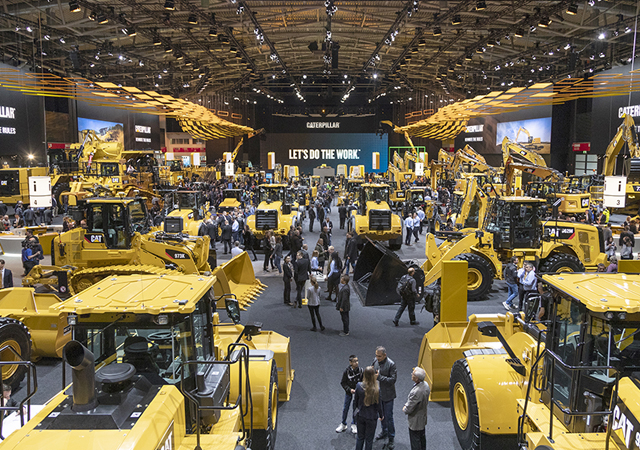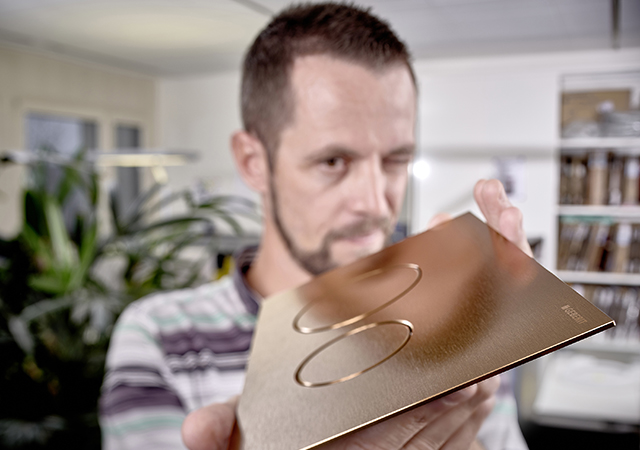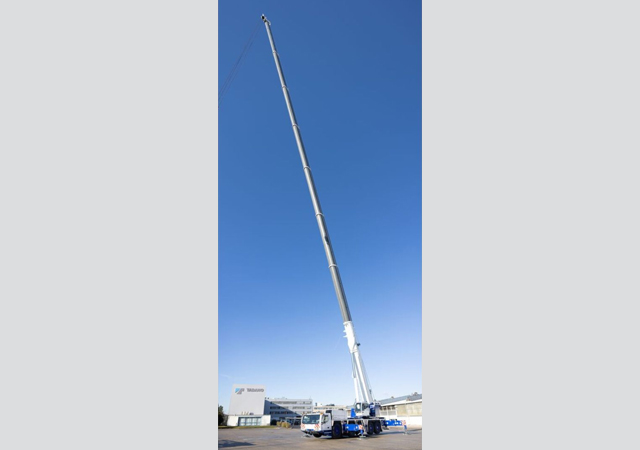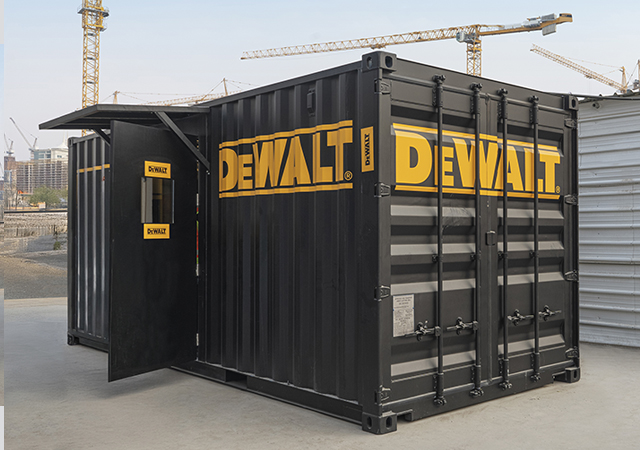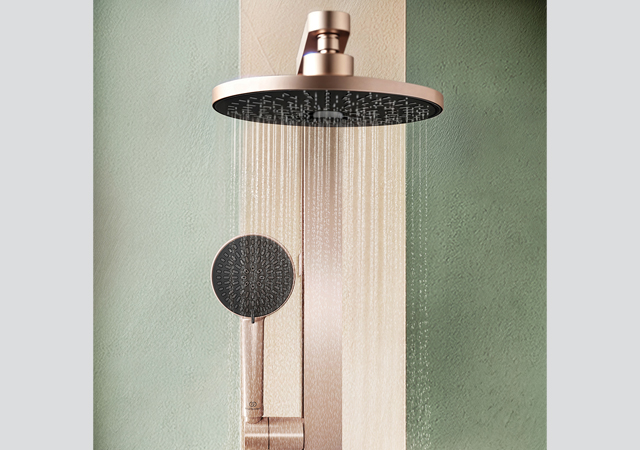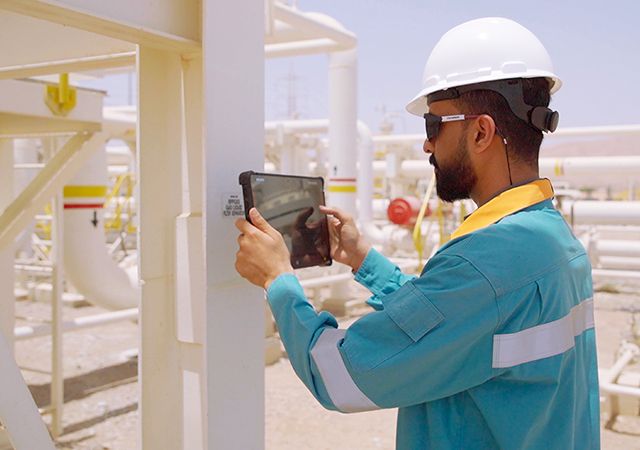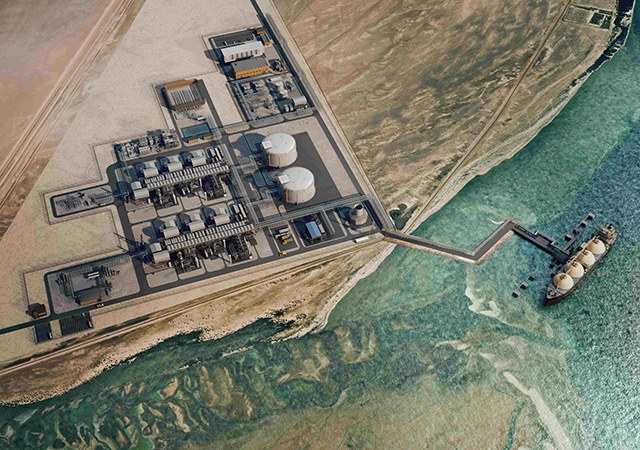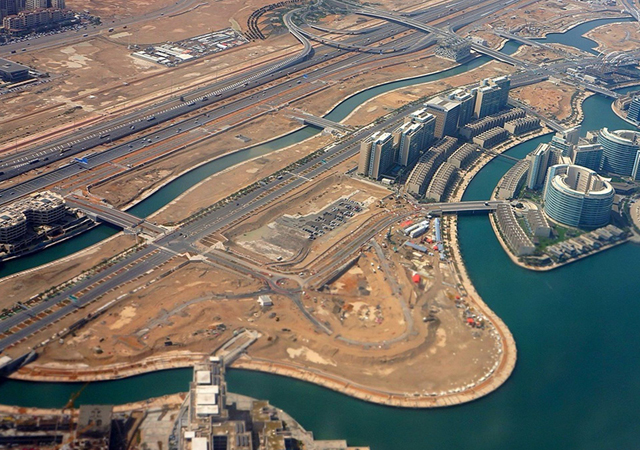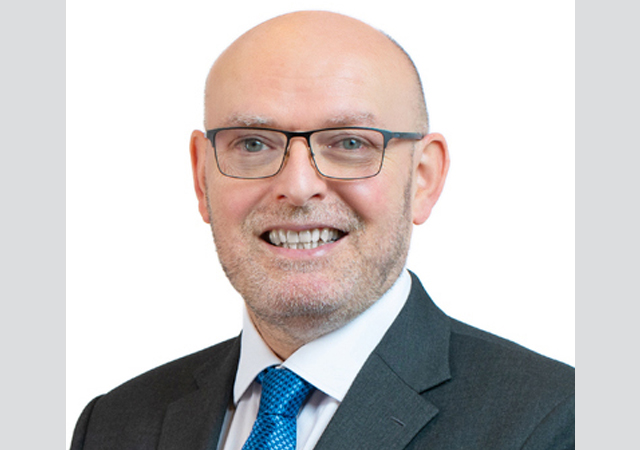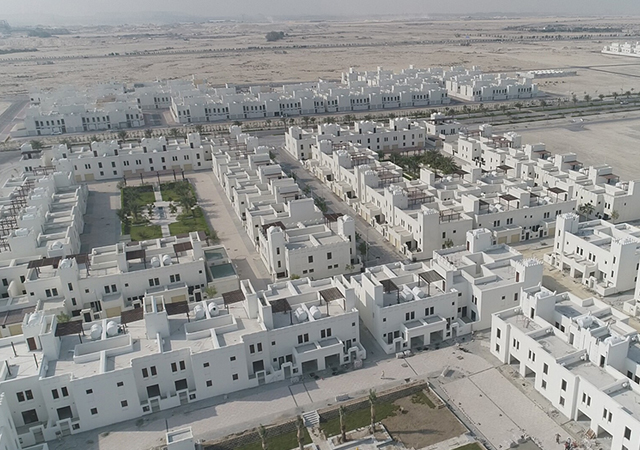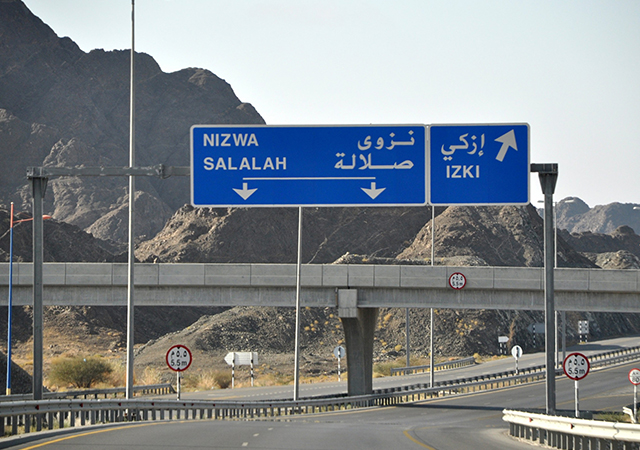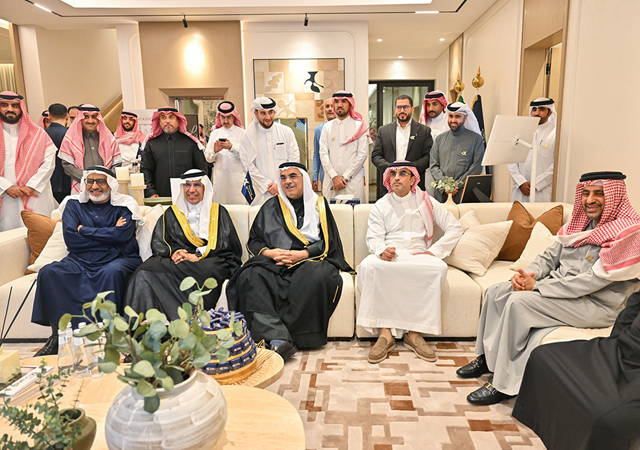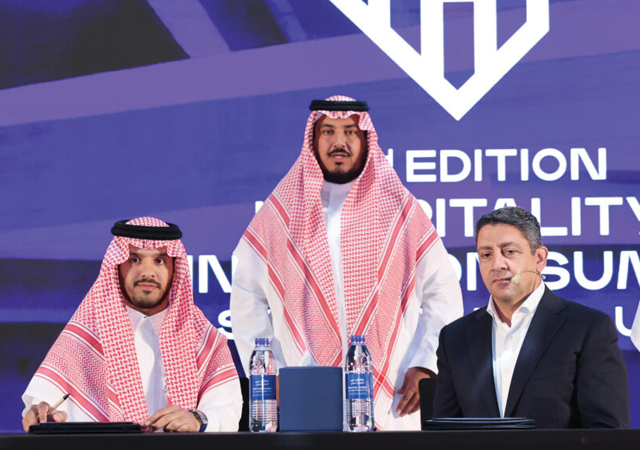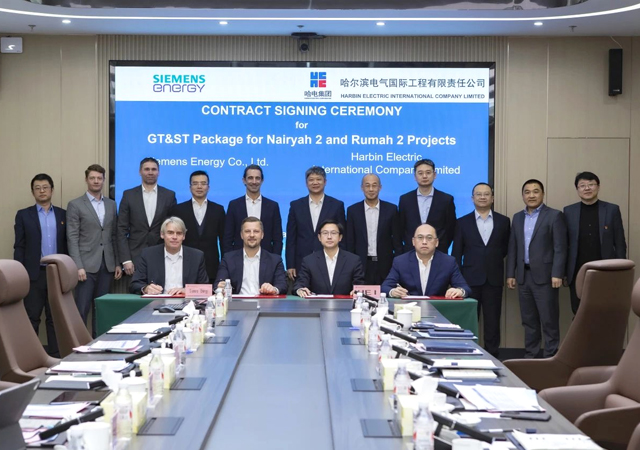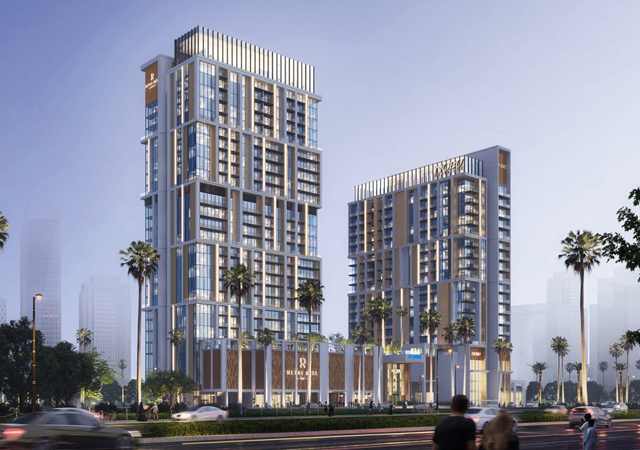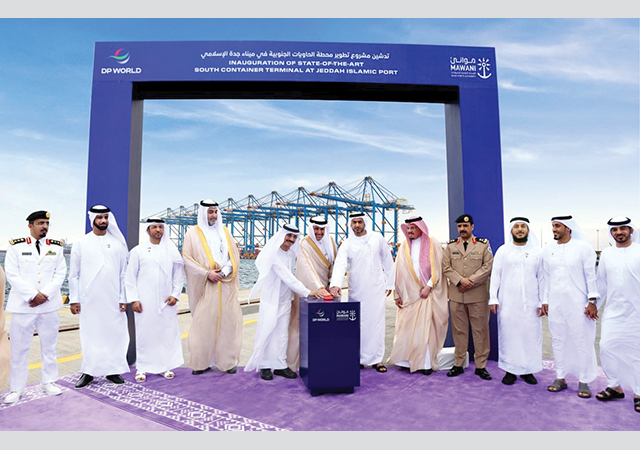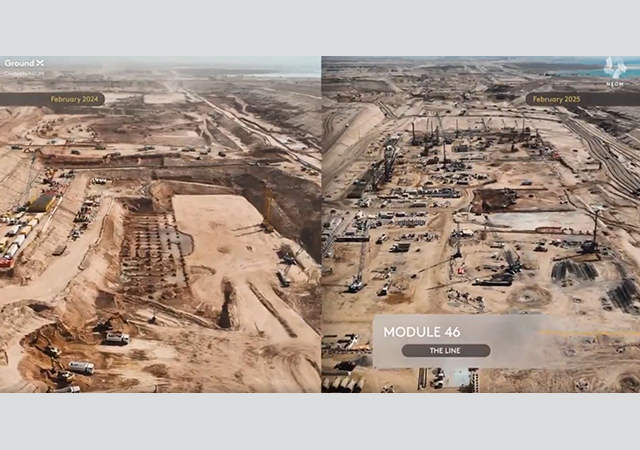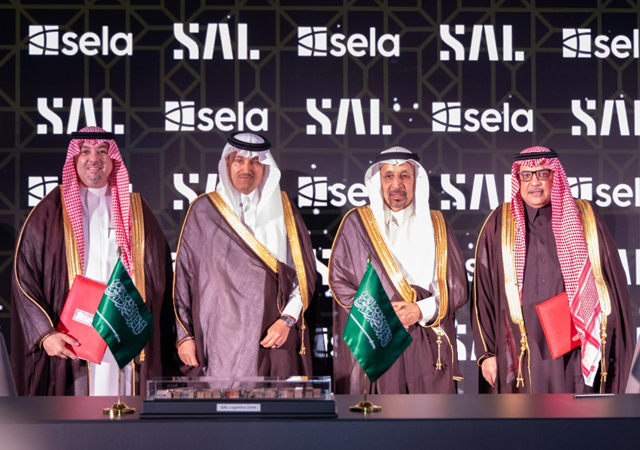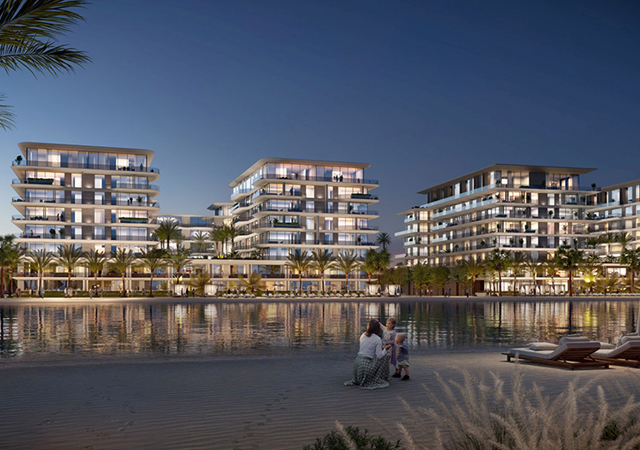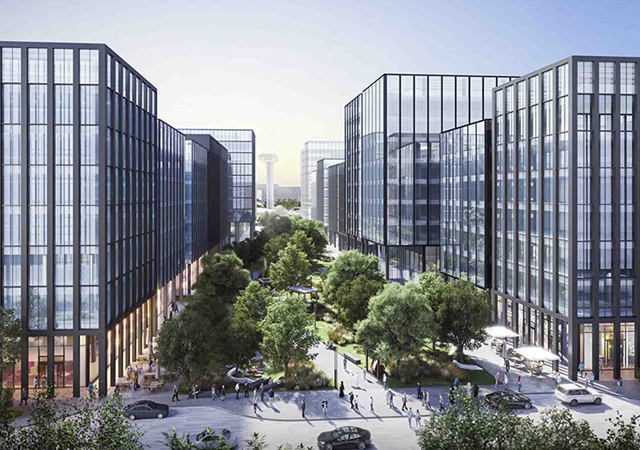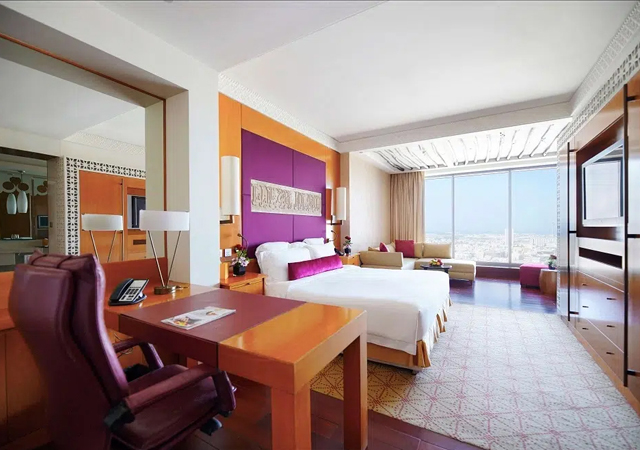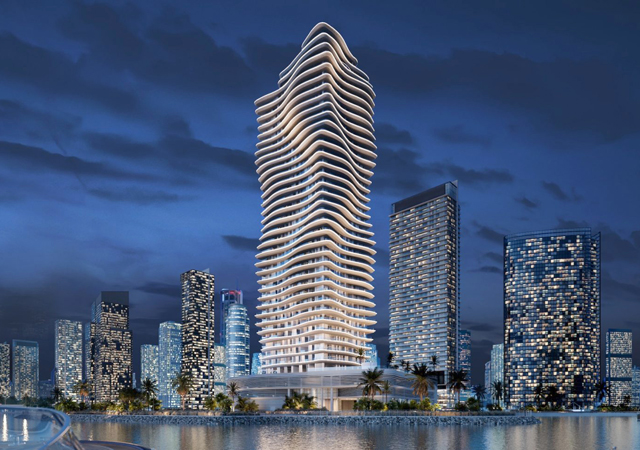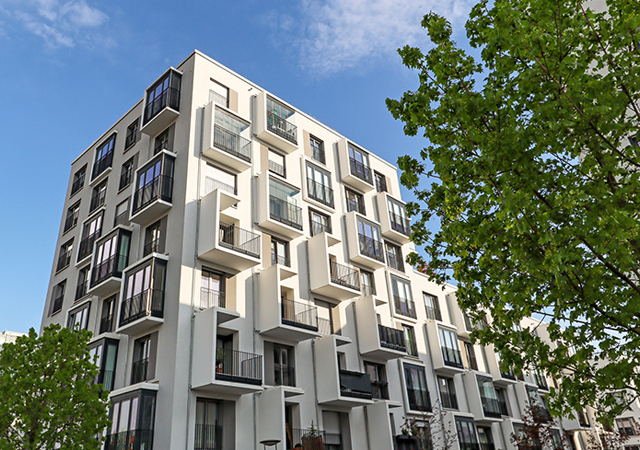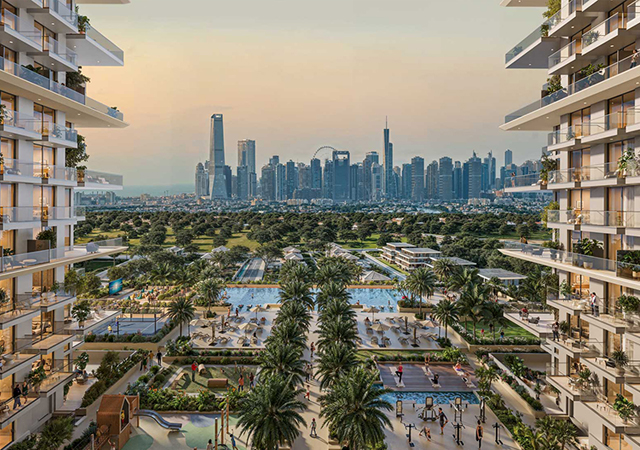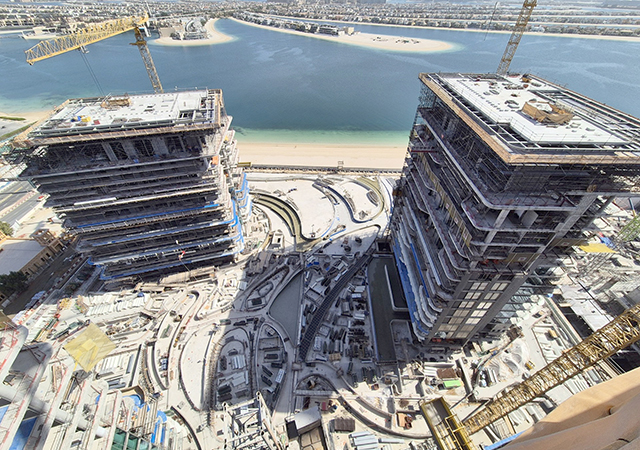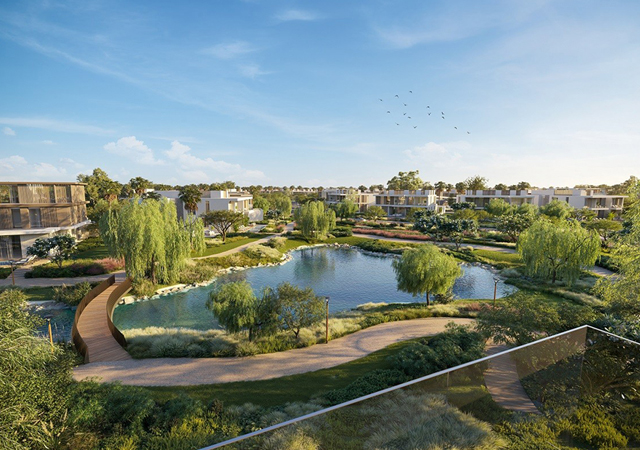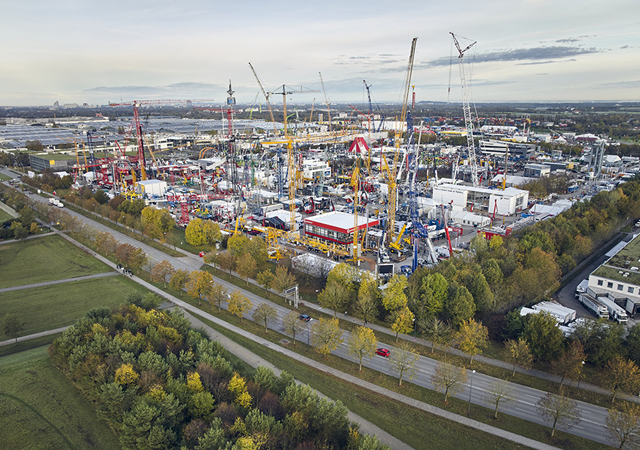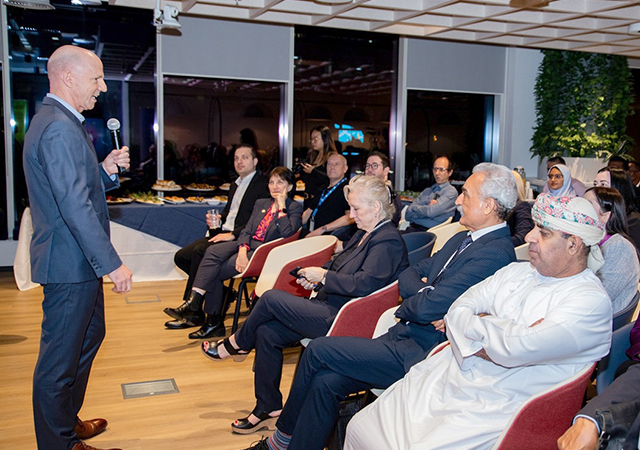
 One of nearly 100 stations planned for the Doha Metro ... an artist’s impression.
One of nearly 100 stations planned for the Doha Metro ... an artist’s impression.
WITH the award of a QR8.4-billion ($2.18 billion) design-and-build contract on the Doha Metro project, Qatar has flagged off its momentous rail development plan which involves four rail initiatives – to be known as Qatar Integrated Rail Programme (QIRP).
The QIRP involves the construction of the Doha Metro, a long-distance passenger railway, a freight rail and a light rail transit (LRT).
Under the latest deal, Italian company Impregilo has been awarded the contract to design and build the Red Line North Underground, which forms part of the Doha metro project. The total contract amount is approximately €1.7 billion ($2.18 billion), of which €630 million ($810 million) is for planning and civil works and €1.1 billion ($1.41 billion) for provisional sums for preparatory works, electro-mechanical plant and architectural works for the stations.
The Red Line North Underground section of the network runs below ground from the centre of Doha city and extends to the north through West Bay and Lusail to Qatar University. It will extend over a distance of approximately 13 km northward from Msheireb station and involves the construction of seven new underground stations. Specifically, two parallel tunnels will be excavated for the two directions of travel, for a length of about 11.6 km and an internal diameter of 6.17 m.
Tenders have already been issued for a number of other packages including prequalification for the Gold, Green and Red lines in addition to the major stations of Msheireb and Education City stations. Meanwhile, enabling works for the metro are now under way.
Speaking about the project, a spokesman for the QIRP says: “The rail network is not solely for the World Cup. Qatar as a nation had already identified the desire to have a world-class rail infrastructure network which would directly support the Qatar National Vision 2030 and this is what drives the Qatar Rail project. Qatar Rail will work closely with Qatar 2022 to meet the challenges of 2022 while also proving effective and efficient post World Cup.”
The total budget of the Qatar Rail project is approximately $40 billion, the funding of which is coming from the Qatari government and thereby acting as a catalyst for private sector investment.
The spokesman says that over 104 business opportunities have been identified from across the areas of rail infrastructure, transport and rolling stock and other business support. “The biggest areas identified are in construction and installation, and services and maintenance, and over half of the identified business opportunities can be captured in Qatar, raising some $20 billion over the next 20 years,” he adds.
This efficient public transport system will be integrated with various land use developments and proposals as well as providing an attractive and competitive alternative to private transport. To be implemented over a number of phases, the QIRP will also forge and improve rail links throughout Qatar and with its neighbours within the region, which in turn is expected to facilitate economic diversification and growth.
Doha Metro
The Doha Metro, an integral part of the QIRP, will cover the greater Doha area and will include connections to town centres and vital commercial and residential areas throughout the city. In central Doha, the metro will be underground, whilst at the outskirts it will mainly be at ground level or elevated. It will consist of three phases. Phase One will entail the initial network scheme; Phase Two, the extension of network; and Phase Three will involve safeguarding future corridors.
 |
|
Doha Metro ... work in progress. |
The 216-km network is proposed to have approximately 100 stations over four lines. The overall delivery packages for the metro will be divided into seven areas including enabling works, civil, track work, systems, rolling stock, operation and maintenance. These packages will be let as separate but coordinated contracts to ensure the integrated delivery of the network.
The metro’s four lines will represent four different routes. The Red Line (Coast Line) is a North-South line connecting the towns of Al Khor in the north and Mesaieed in the south via Lusail, West Bay, Msheireb and the New Doha International Airport (NDIA). It involves a 55.6-km North section, of which 13 km is underground and 42.6 km is at grade or elevated; and a 42.8-km South section, of which 12.8 km is underground and 30 km is at grade or elevated.
The Green Line, also called the Education Line, follows Al Rayyan Road connecting Education City with the Heart of Doha. Furthermore it links to Umm Slal and the Industrial Area South; The Gold Line (Historic Line) runs in an East-West direction and connects Airport City North via central Msheireb with Al Waab Street, Al Rayyan South and Salwa Road; and the Blue Line or the City Line is a semi-circular line that connects the residential and commercial areas of West Bay and Airport City North along the main C-Ring Road,
Meanwhile, the 100 stations that will be built for the metro include two major stations at Msheireb and Education City. The Msheireb Station, located in the centre of Downtown Doha, will be the hub of the network, being the major interchange station for three of the four lines – Red, Green and Gold Lines. The Education City Station, on the other hand, will be a dual operation station which will link the Green Line with the future high-speed, long distance passenger rail.
• Work progress: The three-year contract for the enabling works for the Doha Metro rail network was awarded in June last year. HSP Enabling JV, a joint venture of HBK, Saudi Binladin Group and Porr began work on the contract last September.
Also, prequalification bids were invited for the underground sections of the Gold, Green and Red lines, which are due to be awarded shortly. The Gold Line Underground section of the network runs below ground from the centre of Doha City east to Airport City, west to Al Rayyan, and west following Salwa Road. This tender also includes a line that runs from West Bay to Airport City following the C-Ring Road. The scope of work will include design and construction of all civil engineering and building work for this section of the metro network. The total underground length is approximately 10 km.
The Green Line Underground section of the network runs 15 km below ground from the centre of Doha City south to Karwa City, north to Al Rayyan North, Education City and Umm Saif Stadium.
The Red Line South Underground section of the network runs 12 km below ground from the centre of Doha city and extends south to the international airport and continues above ground to Messaieed.
Bids have also been invited for the major stations of Msheireb and Education City stations, which are scheduled to be awarded in the third quarter of this year.
Amongst the contracts awarded include those for project management consultancy services for Phase One, for Red Line North and South Underground to Jacobs International Holdings; Gold Line Underground and Msheireb/Education City stations, to Louis Berger-Egis Rail JV; and Green Line Underground to Hill International.
Other contracts awarded were for the concept design for architectural branding to Aedas Architects, Atelier4D Architecs Partnership and Van Berkel En Bos UN Studio BV; independent safety assessor (ISA) to Lloyds Register Qatar; the groundwater study to Schiessl Gehlen Sodeikat; tunnel ventilation study to HBI Harters Ingeniers Conseils; and West Bay Transit System project feasibility concept and preliminary engineering request for proposal (at grade option) to Jacobs International Holding.
Tenders are now expected for the elevated and at-grade packages consisting of civil works, mechanical and plumbing (MEP) and architectural finishes. This will be followed later this year by the tenders for three packages including rail systems; rolling stock and trackwork.
Meanwhile, prequalification evaluation and presentation for metro systems and
integration, and rolling stock were completed in March.
Long distance
The QIRP envisages development of a long-distance passenger and freight rail network to connect major centres of population and industries in Qatar and to form part of the planned GCC railway network linking the six member countries.
The long-distance rail network is planned over a length of approximately 510 km and proposed to be developed in distinct phases to meet commitments made to the GCC and domestic passenger and freight demands. It consists of a freight rail line from Port Mesaieed to Ras Laffan, mixed (passenger and freight) rail line from Doha to Saudi Arabia, Doha to Dukhan and Doha to Al Shamal, and high-speed passenger rail line from Doha to Bahrain.
Works will be carried out in three phases. Phase One includes the network port; Phase Two, the passenger high-speed network; and Phase Three consists of mixed passenger and national network.
• Work progress: Bids for consultancy services for the long-distance passenger and freight network’s design for civil infrastructure and MEP works were invited at the end of last year. These are now currently under evaluation.
Lusail LRT
Qatar Rail is in the process of constructing an LRT system to support and integrate the various facets of Lusail, a state-of-the-art city masterplanned by Qatar Diar. It is expected to have four lines; and approximately 15 km of at-grade revenue double track and 5.5 km of at-grade non-revenue single track, 10 km of underground double track (cut and cover) sections, with an underground storage south of the line.
It will also have 25 stations at-grade in various configurations; in addition to seven underground stations, four at Marina District, one each at Entertainment City, Energy City, Qatar Petroleum District and the Pearl (Doha).
Also included is a viaduct, one LRT depot operation, maintenance and storage facility and test track.
The LRT is expected to utilise cutting edge technology that supports using ‘catenary free’ train power service.
It is envisaged that the LRT system shall be integrated within the Qatar National Railway network with connections to the Qatar Rail Doha Metro system at Pearl City station and Al Khor highway.


